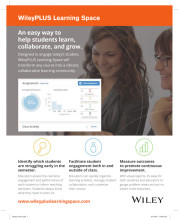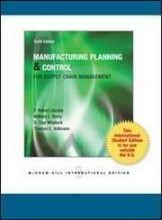Summary: Sustainable Supply Chain Management Articles + Lectures
- This + 400k other summaries
- A unique study and practice tool
- Never study anything twice again
- Get the grades you hope for
- 100% sure, 100% understanding
Read the summary and the most important questions on Sustainable Supply Chain Management Articles + Lectures
-
1 Lecture 1: Introduction to Sustainable Supply Chain Management
This is a preview. There are 1 more flashcards available for chapter 1
Show more cards here -
1.1 Theoretical foundations of SSCM
This is a preview. There are 5 more flashcards available for chapter 1.1
Show more cards here -
What important approaches according to Sustainable SCM are there?
1. Triple Bottom Line VS Complex Network Science View
2. Instrumental (current sustainability logic) VS Ecologically Dominant Logic
3. Efficiency VS Sufficiency approaches -
1.2 Drivers and Barriers of SCM
This is a preview. There are 3 more flashcards available for chapter 1.2
Show more cards here -
What are relevant global trends and drivers for sustainable SCM (5)?
- Relevant Global Trends and Drivers:
- Changing societies – consumer demand for transparency, fairness and eco-friendliness of business processes
- Disruptive technologies – social, mobile, cloud, big-data and green technologies
- Global economy – high levels of off-shore production with low impact on global income equality
- Environmental issues – breaking levels of pollution, overexploitation of resources and growing resource scarcity
- Stringent policies – compliance and anticorruption measures, social and environmental standards for business
- Relevant Global Trends and Drivers:
-
1.3 The leading Firm Perspective
This is a preview. There are 2 more flashcards available for chapter 1.3
Show more cards here -
What actions (3) do you have to make to manage social and ecological issues in a sustainable manner in global supply chains?
While most companies are employing reactive/firefighting
strategies, the way forward is PROACTIVE sustainable supply
chain management.
Sustainable and Responsible Supply Chain actions:
1. Communication strategies
- Reporting
- Labelling
2. Compliance Strategies
- Codes of Conduct/standards (Empirical evidence: little to no results)
- Auditing (Empirical evidence: little to no results)
- Monitoring
3. Supplier Development Strategies (SDS)
- Direct SDS
- Indirect SDS
- Trust
- Collaborative Relationships (Empirical evidence: collaboration create significant change, is essential for effective implementation) -
1.4 Article: Montabon, Pagell & Wu: Managing Sustainability Sustainable
This is a preview. There are 2 more flashcards available for chapter 1.4
Show more cards here -
What are weaknesses (2) of instrumental logic?
- Logic is backward looking, it studies existing unsustainable supply chains, it looks at existing firms and then offers tradeoffs by prioritizing the profits of existing firms over other sustainability outcomes;
- The focal firm is the primary focus, overlooking other members of the chain and the communities in which the supply chain operates.
-
Why is the alternative approach called Ecologically Dominant (ED) leading to truly sustainable supply chains?
- Logic sets in when tradeoffs are encountered, creating a truly sustainable supply chain, not reducing the harm of a single focal firm;
- Economic and social issues are nested inside environmental issues;
- When tradeoffs are inevitably encountered, the priority is to protect the environment, then society and onlhy then to consider profits
- The elements of sustainability are not changing compared to other logic, but how they are interrelated and the resulting decision making does, which results in different outcomes. -
What do you need to build a new way of thinking (new logic)?
You must consider:
1. Culture - Organization's or society's values beliefs ideology.
2. Logic - institutional level of analysis, framework that guides research and practice in SSCM.
3. Cognitions - firm or individual level. -
Why is Triple Bottom Line approach not the right approach to get a sustainable SC?
TBL is the dominant concept (social, environmental and financial). All three aspects should be treated equally.
- TBL does not align with stakeholder theory, which puts supply chain in focus, problem with incentives to align supply chain.
- Customers often blamed, that they don't buy more sustainable products, so in the TBL the focus is on economic rather than the other two.
- In general: focus is too much on short- term economic gains in research. -
Explain why Porter's Win- Win perspective is not the right perspective.
Win- win is attractive as it suggests that the demands on supply chains to be socially and environmentally responsible are actually opportunities to increase profits. But in this way sustainability issues are judged through the lens of profit maximization. -
2 Lecture 2: Sustainable Last- Mile delivery
-
2.1 Last- mile logistics: Recap
-
Why are the biggest challenges lying in last mile logistics in urban areas? What inefficiencies?
Delivering in a high density areas is a big challenge.
Inefficiencies in last mile (urban) logistics:
- Final frontier of logistics:
• End-user interaction
• Critical for customer satisfaction
- Most inefficient part of the supply chain:
• Small order sizes
• Lack of consolidation
• Network conditions (city logistics)
• Short lead-times
• Many constantly-changing and geographiclly dispersed locations -
What is the key delivery performance metric in last mile logistics? What are the determinants?
Key delivery performance metric in last mile logistics:
• Cost per delivery
Determinants of cost per delivery:
1. Capacity utilization (load factor)
• Delivery vehicle cost (fixed + variable)
• Employee cost (fixed + variable)
2. Delivery route sequence
• Distance traveled
• Number of orders delivered (density)
Goal: short routes, time and distance, with high capacity utilization (load factor and delivery density)
--> The more deliveries at the same location (delivery density), the lower the cost per delivery.
- Higher grades + faster learning
- Never study anything twice
- 100% sure, 100% understanding
Topics related to Summary: Sustainable Supply Chain Management Articles + Lectures
-
Sustainable Last- Mile delivery - Last-mile logistics in urban areas: challenges
-
Sustainable Last- Mile delivery - Article: Visser, Nemoto & Browne: Home Delivery and the impacts on Urban Freight Transport: a review
-
Green product & service design + Life Cycle Assessment
-
Cleaner production & waste management - Stages of Green Production
-
Sustainable sourcing & relationship governance - Company presentation: Greening Goliaths and emerging Davids; towards “the new normal” – The case of Moyee coffee
-
Sustainable sourcing & relationship governance - Tutorial 2: Sample exam questions & discussion questions - Sample exam questions
-
Closed- loop supply chains - Concept of Circular Economy
-
Closed- loop supply chains - Concept of Closed- loop Supply Chains
-
Closed- loop supply chains - How to 'Close' the loop?
-
Closed- loop supply chains - Article: Guide & Van Wassenhove: The evolution of Closed-Loop Supply Chain Research
-
Guestlecture Picnic































